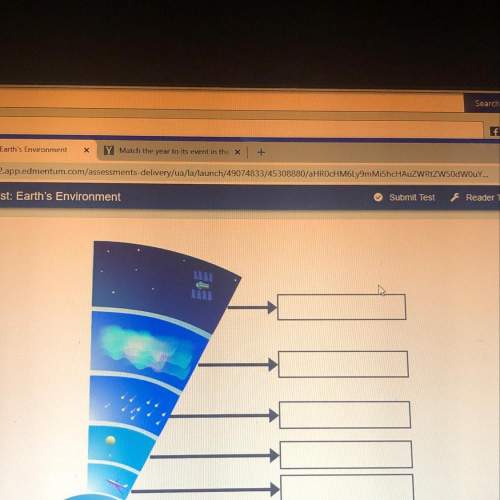Which statement best describes balancing equations and the law of conservation of mass?
a. The...

Biology, 20.03.2020 01:28, ddswaggsoflyy3176
Which statement best describes balancing equations and the law of conservation of mass?
a. There are more atoms in the reactants than in the products, and the total mass is the same in the reactants and in the
products
b. The number of atoms is the same in the reactants and in the products, and the total mass is the same in the reactants and
in the products
c. There are fewer atoms in the reactants than in the products, and the total mass is less in the reactants than in the
products
d. There are more atoms in the reactants than in the products, and the total mass is higher in the reactants than in the
products

Answers: 3
Other questions on the subject: Biology

Biology, 21.06.2019 19:30, hdjsjfjruejchhehd
Chicken pox and hepatitis are bacterial diseases. true or false?
Answers: 1

Biology, 21.06.2019 22:00, tiffuuu
Im is in a crowd of people at the mall looking for his girlfriend tammy, who was supposed to meet him for dinner. jim realizes tammy is across the room as he catches a whiff of her overpowering perfume, 'paris #6'. which process explains why jim is able to smell the perfume?
Answers: 2

Biology, 22.06.2019 00:50, bob4059
Ascientist separates a population of mice into two groups. what would most likely increase the rate of speciation in this population. a. teach the two groups different tricks b. allow the two groups to breed with each other c. put the two groups in different environment d. have the two groups live in identical ecosystems
Answers: 3

Biology, 22.06.2019 01:30, eguilford4438
Scenario 5 1) take 10 red and 10 black beans and place them, mixed, on the table. record the starting phenotype # and frequencies (% of your total population) of your starting population in the table provided (generation 0). 2) act as a predator. “capture” as many organisms as you can until you have reduced the population to three organisms. put them aside. at this point, the predators die. 3) the remaining organisms each produce 2 clonal offspring. multiply your organisms accordingly and allow them to mix on the table. calculate and record the resultant phenotype # and frequencies (% of your total population) of your population in the table provided (generation 1). 4) repeat the reproduction event, allowing each of your organisms to produce 2 clonal offspring. calculate and record the resultant phenotype # and frequencies (% of your total population) of your population in the table provided (generation 2). 5) repeat the reproduction event, allowing each of your organisms to produce 2 clonal offspring. calculate and record the resultant phenotype # and frequencies (% of your total population) of your population in the table provided (generation 3).
Answers: 1
Do you know the correct answer?
Questions in other subjects:

History, 07.07.2019 08:40




Mathematics, 07.07.2019 08:40





Physics, 07.07.2019 08:40







